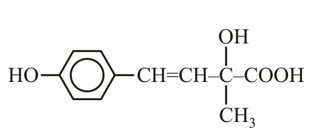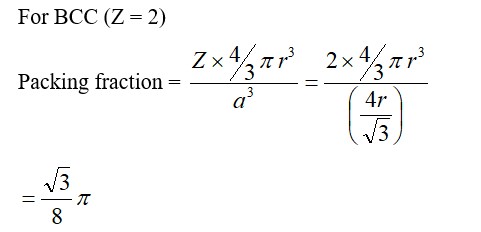A certain element crystallises in a bcc lattice of unit cell edge length 27 Å . If the same element under the same conditions crystallises in the fcc lattice, the edge length of the unit cell in Å will be ___________. (Round off to the nearest Integer).
[Assume each lattice point has a single atom] [Assume √3 = 1.73, √2 = 1.41]
A certain element crystallises in a bcc lattice of unit cell edge length 27 Å . If the same element under the same conditions crystallises in the fcc lattice, the edge length of the unit cell in Å will be ___________. (Round off to the nearest Integer).
[Assume each lattice point has a single atom] [Assume √3 = 1.73, √2 = 1.41]
-
1 Answer
-
Edge length in bcc, a? = 27 Å
Let, Edge length in fcc be a? Å
Now, the same element crystallises in bcc as well as fcc.
For bcc: 4r = √3 a? ⇒ r = (√3 / 4) a?
For fcc: 4r = √2 a? ⇒ r = a? / (2√2)
So, (√3 / 4) a? = a? / (2√2)
(√3 / 4) × 27 = a? / (2√2)
a? = 33.13 Å
The nearest integer is 33.
Similar Questions for you
ΔG° = –RT * 2.303 log K
–nFE° = +RT * 2.303 log K
2 * 96500 * 0.295 = 8.314 * 298 * 2.303 log10 K
10 = log10 K = 1010
It has chiral centre and differently di substituted double bonded carbon atoms.
For FCC lattice
Packing efficiency = 
CsCl has BCC structure in which Cl– is present at corners of cube and Cs+ at body centre
Taking an Exam? Selecting a College?
Get authentic answers from experts, students and alumni that you won't find anywhere else
Sign Up on ShikshaOn Shiksha, get access to
- 65k Colleges
- 1.2k Exams
- 681k Reviews
- 1800k Answers


